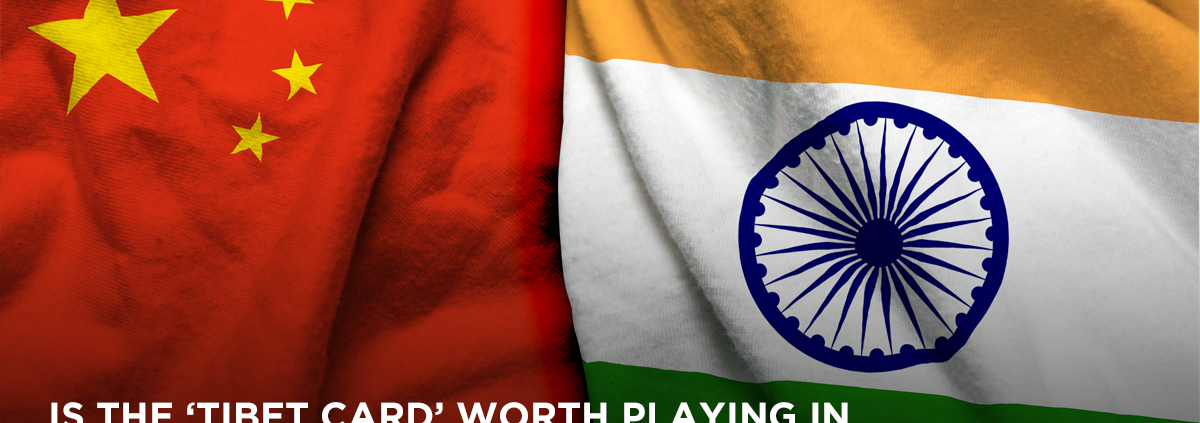‘Bharat Mata ki Jai’ and ‘Tibet Desh ki Jai’ were the slogans heard at the funeral of Nyima Tenzin, the Tibetan soldier who died at the Line of Actual Control (LAC), in a landmine blast near Pangong Tso. Tenzin is probably the first SFF soldier to have a funeral with full state honours. In the backdrop of the ongoing India-China border clash, and this recent incident involving the martyrdom of the Tibetan-Indian soldier, there appear to moves to rekindle the Tibet issue. And it wouldn’t be the first time that India is considering using the ‘Tibet card’ to take a swing at China.
The history
The Chinese invasion of Tibet in 1950 led to the biggest alteration in India’s geopolitical equation with China. Ever since, every incident, involving a Chinese intrusion on the LAC, has come across as part of a strategy to check India’s resolve.
I believe that the Galwan incident has changed the India-China dynamic and damaged the relationship between the nations beyond repair. At least for the time being. China has withdrawn from the Galwan valley and other friction points, but it is still too early to say that they have changed their longstanding approach of creating pressure on Indian policymakers.
Wary of alienating the Chinese, previous Indian governments had remained quiet against the Chinese encroachments on the border. Indian policymakers have been overly diplomatic and more often than not, it has worked to China’s advantage. But this diplomacy has often been perceived as a sign of weakness by the Chinese – we mustn’t forget that China still claims Arunachal Pradesh as “South Tibet”.
Why the ‘Tibet card’?
The Indian political ecosystem has always seen the issue of Tibet as one where India has a responsibility to be at least slightly vocal. As a consequence of Chinese oppression, more than 1,00,000 Tibetans have entered India as refugees, over the years. India has made its position clear by maintaining strong ties with the people of Tibet. This is obvious in the very active help extended to the Dalai Lama, in setting up a Tibetan government in exile.
other notable aspect is the role played by Tibetans in the Indian army. The Special Frontier Force (SFF) is a parliamentary unit, which recruits significantly, from within the Tibetan community in exile in India. Now, with a formation of over 40,000 troops, helicopters and air-defense systems deployed at the contentious border, the Chinese have surely got the message that India is prepared for all eventualities. In contrast, China continues to play down the participation of Tibetan soldiers in the military operations in Ladakh – perhaps hoping that this will help in keeping global perception of the confrontation within the realms of a standard border dispute.
The Tibet card in this scenario would be more than just a tactical step. The advocacy for the freedom and the sovereignty of the Tibetan people, which would be central to such an approach, has the potential to corner the Chinese Communist Part. This is significant because the Chinese political elite are already in the dock for mismanaging the early stages of the COVID-19 crisis, which could have been contained within their nation, if it was dealt with better.
The death of 20 Indian Army personnel, in the Galwan Valley, led to an expected backlash from the Indian public, with anger at China reaching unprecedented levels. The death of a Tibetan-Indian soldier near the border has added fuel to this fire. Calls for a more active support for the Tibetan cause have not been this loud or insistent, in years. As far as think-tanks and strategists, the consensus seems to vary only in degrees, but not fundamentally. Some argue that this is in fact the perfect opportunity to challenge the legitimacy of the Chinese claim over Tibet, while some others have talked of refreshing India’s Tibet policy.
Will it work?
We all know that China isn’t one to obey global rules; for instance, take how they have refused to abide by the UNCLOS on the South China Sea. For over 60 years, China’s snail paced intrusion plan has been quite successful in encroaching on Indian land. For our part, we in India have been hesitant in leveraging crisis situations to our advantage.
As I write this blog, the Indian army has gained virtually all of the high lying positions across Pangong Tso. Time will tell if the rapid onset of the extremely harsh winter weather in the area changes that equation. Whatever the case may be over the next few months, the Tibet card could become a potent diplomatic weapon, especially if deployed in conjunction with an advantageous military position along the LAC. In fact, the move might play a key role in de-escalating the current confrontation, by convincing China that its rhetoric is being met in kind.



